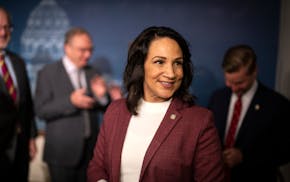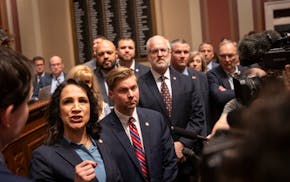Minnesota schools struggling with soaring expenses and declining funding streams are in line to get some help from the new federal COVID-19 aid package — far more than they did from the first round of stimulus money earlier last year.
It's not clear yet exactly how much the state's schools will receive, but the new bill provides $82 billion for education nationwide, including $54 billion for K-12 schools and $23 billion for higher education. That's four times as much as schools received in March in the government's first round of pandemic aid. That funding expired Dec. 30.
In Minnesota, where many districts are preparing to reopen elementary schools later this month, school leaders are eager to secure money that can help buy cleaning products and plexiglass barriers, pay for workers hired to help students with technology, provide free child care to the children of front-line workers and help expand support services for students who have fallen behind academically during the pandemic.
"It's really welcome relief that they are going to be able to have funding now for this second half of the year," said Deb Henton, executive director of the Minnesota Association of School Administrators.
As with the last round of stimulus funds, schools are expected to have some flexibility in deciding how to spend the money.
Some used last spring's funds to retrofit school buildings for the pandemic with ventilation system upgrades and hand-washing stations. Henton said some will still opt to spend the money on facilities, while others may have more pressing concerns with school staff or programs. As with the last round of aid, the money can also be spent on mental health services, technology and coordinating meal distribution and delivery.
Some district leaders are contemplating how to expand after-school, weekend and summer programs so they can serve more students, and the funding could help cover some of those expenses.
Many schools have reported widespread issues with attendance and student performance, including surges in failing grades as some students have struggled with distance learning and other pandemic-related challenges.
Wendy Hatch, a spokeswoman for the Minnesota Department of Education, said the new bill specifically addresses expenses related to students' "learning loss" this year, a category that wasn't a part of the first relief package last spring.
Sorting out how, where and when to provide that additional help is top of mind for educators as they head into the second half of the school year, said Scott Croonquist, executive director of the Association of Metropolitan School Districts.
"One thing I know our superintendents and school leaders are really looking at hard right now is what kinds of programs and services can we put in place to help students who have struggled in the distance learning environment," he said.
Croonquist said he expects many districts will use the money to help pay for the free child care programs they've been required to offer during the pandemic.
Some are likely to direct it to transportation costs, which have gone up for many districts that have had to add or change bus routes to comply with capacity and social distancing guidelines.
While the money will help districts address some of their most urgent problems, it won't be enough to fill some of the bigger budget gaps created by the pandemic.
Public school districts around the state have reported a drop in enrollment this year, particularly in kindergarten, as families opted for home schooling, enrolled in private schools or delayed kindergarten enrollment.
Fewer students mean less money from the state this year — even if many of those missing students return to public schools in the fall.
Henton said many school leaders are already planning for cuts.
"We anticipate that there will still be budget reductions coming this spring that will be announced in anticipation of next year, unless the state is able to and the federal government is able to increase funding," she said.
Meanwhile, Minnesota's colleges and universities will also get a significant share of the stimulus money.
Meagan Pierluissi, a spokeswoman for the University of Minnesota, said the funds can be used for pandemic-related expenses such as technology costs, staff training and reimbursement for lost revenue, as well as student financial aid and other expenses.
The U faces an estimated $166 million budget deficit related to the pandemic.
"As with the CARES Act, university leaders will determine the best use of the funds before distribution occurs," she said.
Erin Golden • 612-673-4790

Want to share info with the Star Tribune? How to do it securely

'Safe recovery sites' would offer syringes, naloxone and more to people using drugs. The plan could be in peril.
New Minnesota GOP leaders seek peace with party's anti-establishment wing

Who is Republican Lisa Demuth, Minnesota's first House speaker of color?

